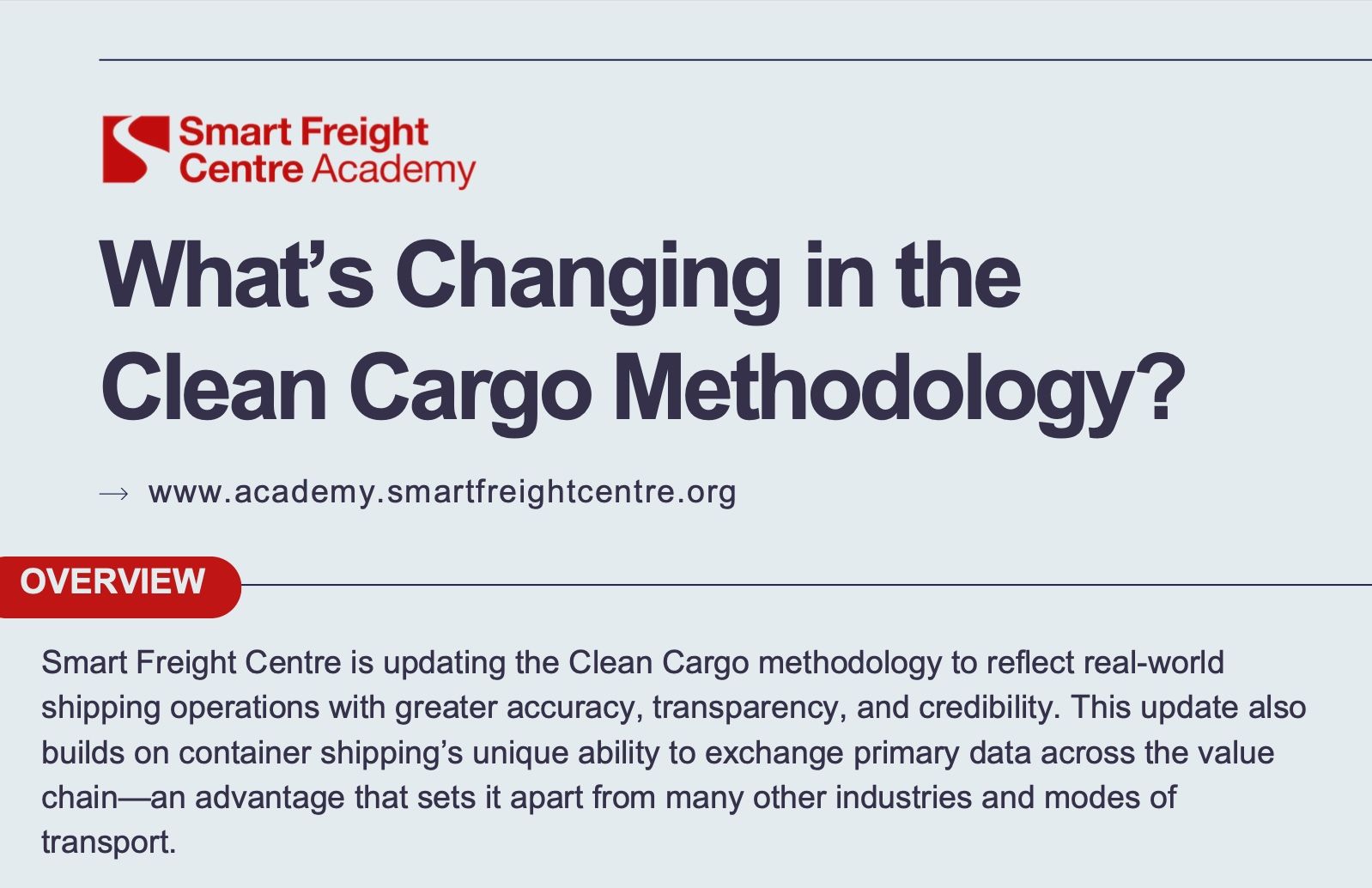
What’s Changing in the
Clean Cargo Methodology?

Smart Freight Centre is updating the Clean Cargo methodology to better reflect real-world shipping operations. These improvements aim to enhance accuracy, transparency, and credibility in maritime emissions reporting. The updates build on container shipping’s unique ability to share primary data across the value chain—an advantage not commonly seen in other sectors or transport modes.
The phased rollout begins with more granular fuel reporting in 2025, including alignment with IMO standards, clearer tracking of low-emission fuels like biofuels and methanol, and the introduction of a “Fuel – Other” category to support voluntary market transparency and avoid double counting. In 2026, emissions calculations will shift from assumed vessel utilization to actual cargo carried, improving the accuracy of TEU-km reporting. LNG-powered vessels will also be subject to more detailed, engine-specific fuel reporting. By 2027, the methodology will include tonne-km reporting, enabling weight-sensitive emissions analysis—especially important for heavy cargo types—and fair comparisons across modes such as air and ocean freight.
These updates will allow for more precise, route- and cargo-based emissions data and offer shippers and carriers a stronger foundation for emissions decision-making. To access the infographic, click the download button below.
Enroll in our courses below to learn more or apply these changes in practice:
Courses related to this subject:
Who we are
The Smart Freight Centre Academy is the education and knowledge-hub of globally recognised NGO Smart Freight Centre, a leader in freight decarbonization practices, standards and frameworks.
Copyright © 2025
SFC Academy Approval
Would you like custom training for your team or organization? Perhaps you'd like one of the standrad courses delivered only to your team or business unit? The SFC Academy is proud to offer a custom training service whereby we work with you to ensure your specific needs and learning objectives are addressed in a custom format. Please contact us for more information